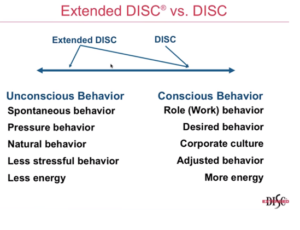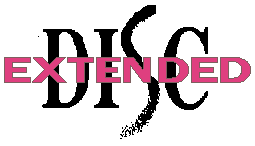As a practitioner that relies heavily on behavioural assessments, I have been asked to make a distinction between the traditional DISC tools and my preferred solution – Extended DISC®.
As I said in the subject, size matters.
DEPTH OF ANALYSIS
I remember before I transitioned to Extended DISC® having individuals in an intervention get the same exact report. Many tools are happy to identify 16 unique styles.
Extended DISC® identifies 160 behavioural styles – 40 for each of the four quadrants.
Many DISC tools identify a fraction of those styles. This gives the appearance of generic reporting and impacts negatively on the credibility of the tools among users. In large groups, there is the high probability that participants may get identical reports.
In addition to the depth of the identified styles, Extended DISC® has over 200,000,000 unique DISC results to ensure employees receive very personalized and specific results.
THE MISSING ELEMENT

Just this week an executive shared with me that the close colleagues with whom she had shared her Extended DISC® Leadership DNA report had not seen her Natural Style as reported. They just did not know that part of her. However, she was fully aware of the difference between her presented persona and who she is in her safe space. Not everyone is as in tune with themselves as she is. Consequently, many experience constant internal conflict bridging the gap of the conscious and unconscious domains. This can be stressful and may lead to early burn out or high turnover levels.
Traditional DISC tools fail to capture that inner self and miss a critical component of meaningful behavioural assessment deployment.
Extended DISC® provides insights into both the conscious and unconscious domains. The reports address the individual’s Natural Style and the Perceived Need To Adjust.
Let’s have a conversation about how Extended DISC assessments on the revolutionary FinxS Platform can make a difference for you.
Trevor E S Smith
Success with People Academy
INFOSERV People Tech Solutions









